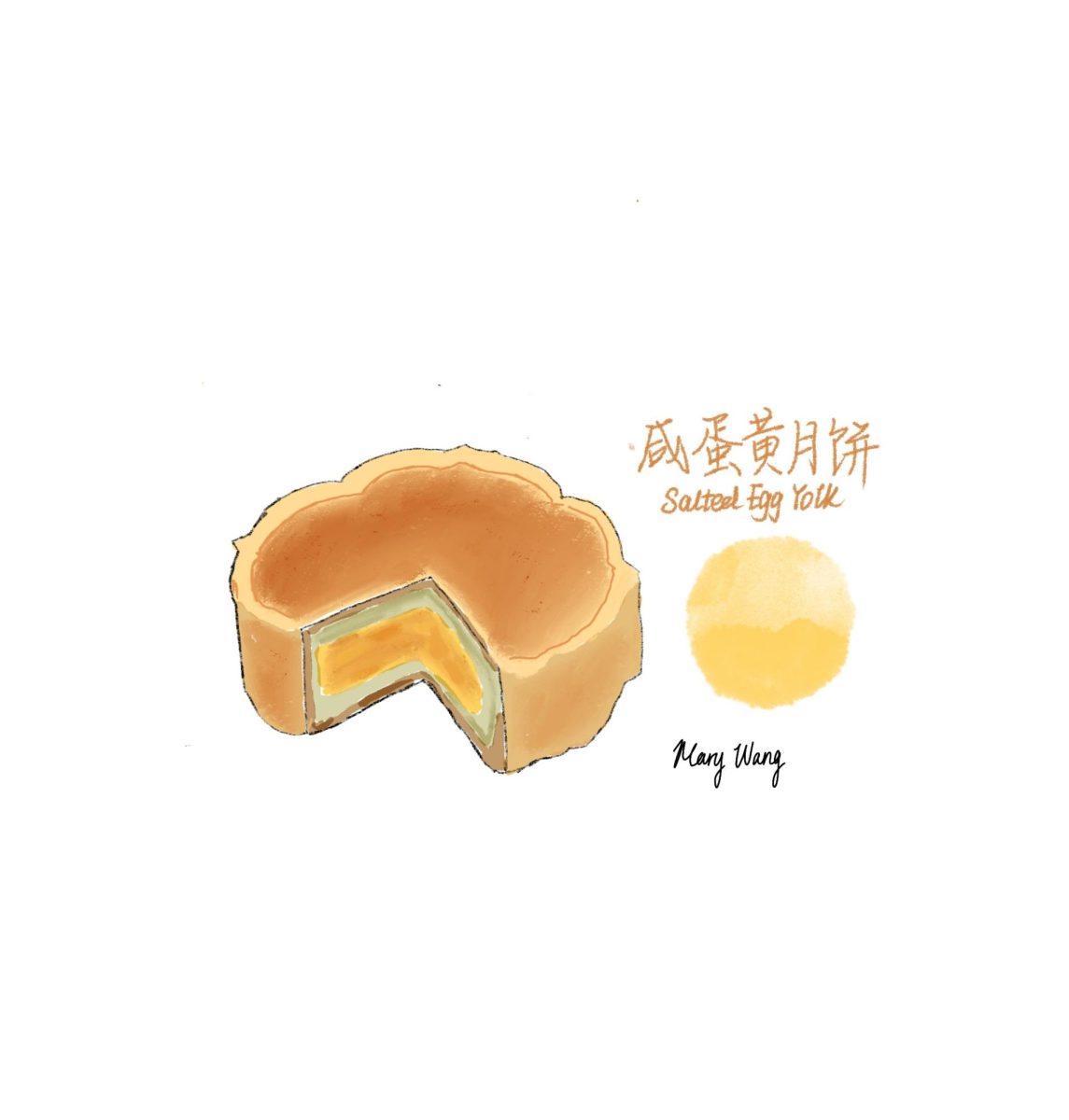For Chinese students, the absence of our parents during this festive period magnifies the essence of the Mid-Autumn Festival.
Celebrated on September 29—or August 15 on the Lunar Calendar—the festival symbolizes family reunions and quality time with friends, occurring when the moon is at its roundest and brightest. In Mandarin, “Yuan” also conveys notions of “roundness” and “reunion.”
During the festival, people venture to elevated locations to watch the beautiful moon in an ethereal shimmer. Under the gleaming moonlight, family members share best wishes for each other.
The most common folk story for the Mid-Autumn festival is Chang’e and the rabbit. Legend has it that Chang’e, the Chinese Goddess of the Moon, was the wife of Hou Yi, the Chinese God of the Sun. Hou Yi gave the elixir of immortality to Chang’e, but one of Hou Yi’s apprentice covets this elixir and tries to take it from Chang’e. To protect herself and the elixir, she swallows it and immediately rises to the sky to forever live on the moon. A rabbit, which is the symbol of the moon, accompanied her on the journey to the sky. From then onward, people celebrate Chang’e and the moon during the Mid-Autumn Festival.
The best part of the Mid-Autumn Festival is sharing mooncakes with family. The connection between mooncakes and the festival roughly began during the Yuan and Ming dynasties. Legend has it that during the uprising, Zhu Yuanzhang, an emperor who started his empire from a revolt, hid a note with the message “Uprising on the 15th August Night” in a mooncake as a tool to contact the various armies. After the Ming Dynasty was established, Zhu used mooncakes as Mid-Autumn Festival desserts to reward his ministers. Since then, the custom of eating mooncakes during the Mid-Autumn Festival has spread.
Weeks before the day of the festival, my family receives packages of mooncakes from relatives and friends. The most traditional mooncake fillings are Wu’ren (mixed almonds), red bean and lotus seeds, but there are also more conventional flavors, such as snow skin, green tea, salted egg yolks and fruit. With crispy, flaky skin and soft, moderately sweet fillings, people often fall in love with mooncakes after the first bite.
Mooncake exteriors envelop either sweet or savory fillings, leaving behind a lingering taste and sparking culinary curiosity. Often, mooncakes are crafted at home using specialized molds, as families gather to prepare the skins and diverse fillings together. Typically, a single Chinese character is embossed on the mooncake, like “Yuan” or “Yue”, symbolizing the moon and familial reunions respectively. These characters convey warm wishes to those who partake in the mooncake, encapsulating hopes of joy and unity.
Mid-Autumn Festival is not just important for me and my family; in fact, it has special meaning for all families who are separated from each other, especially Chinese students at the School whose parents are not with them.
The Mid-Autumn Festival is not merely significant to me and my family, but also profoundly resonates with anyone distanced from their loved ones, especially the Chinese students here. Hopefully, the School will consider a day off.
“For international students, sometimes we couldn’t be with [our] family,” Mandarin teacher Yuhong Jia said. “When we look at the moon during the Mid-Autumn Festival, we can see our family through the moon. When we look at the moon thousands of miles apart, we still share the same moon. We can feel like we are loved, and that we are still together even if we are [physically] apart.”
On the night of September 29, don’t forget to find a good spot to watch the moon at its roundest and brightest!





















































